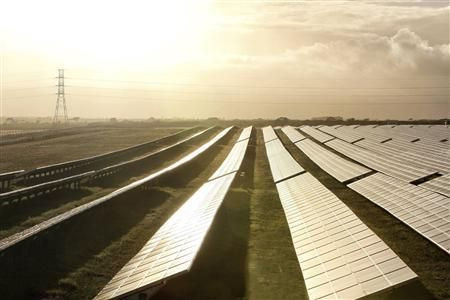Majority of Australians prefer solar energy

Among all energy sources, solar energy is the most popular among Australians at 84 percent, according to the Climate Institute’s annual review of public attitudes on climate change and its solutions. Solar power was followed by wind (69 percent) and hydro (47 percent).
In contrast, there was a 7 percent drop in preference for gas from a year ago to 21 percent from 28 percent and also 7 percent decline for nuclear to 13 percent from 20 percent. Solar and wind logged 2 percent and 5 percent, respectively, increases in preference from the past 12 months.
Residential solar power is quickly gaining ground in the country, thanks to the distribution of rooftop solar photovoltaic systems, which have pretty steep initial costs yet lower electricity consumption in the long run.
Despite the fact that majority of Australians are warming to the idea of renewable energy like solar, the green policy space in the country is likely to remain a central election battleground for the remainder of Prime Minister Tony Abbott's term. After an intense political period of debate, the Abbott government succeeded in reducing Australia's Renewable Energy Target (RET) by 2020 from 41,000 gigawatt hours to 33,000 GWh, while the Labor declared an aspiration to achieve 50 percent renewable energy by 2030.
The new target means that by 2020, about 23.5 percent of Australia's electricity generation will be from renewable sources. But green groups are worried that these carbon cuts will fall short, Australia's commitment pales in comparison to other developed countries which are supposed to be leading the charge for renewable energy.
According to scientists, to have a vaguely reasonable chance of restraining average global warming to below two degrees Celsius, the world must be at net-zero greenhouse gas emissions before the century ends. This means that all countries and all sectors ultimately need to move strongly toward zero emissions.
The United States has pledged a 26 to 28 percent cut on 2005 levels by 2025, with California alone proposing a 50 percent renewable energy target by 2030. Resource-rich Canada promised a cut of 30 percent by 2030, while Germany is aiming for a 60 percent cut by 2035. Denmark already gets more than 40 percent of its electricity from renewable sources and is aiming for 100 percent by 2035.
"Rather than focus on the jobs and investment renewables bring, Tony Abbott and Joe Hockey call wind farms ugly," said Opposition Leader Bill Shorten . "Today, the government needs to demonstrate how their targets are consistent with its commitment to the two degree warming scenario."
Despite these comparisons, Abbott emphasised the need to "take a strong 2030 emissions reduction target" while also protecting the economy. "We exceeded our Kyoto target and are on track to meet and beat our 2020 target," he said. "By 2020, Australia's emissions will be at least 13 percent below 2005 levels. On a per capita basis, this will be a better reduction than Canada, the US, Japan, and the EU."
Fortunately, scientists are looking into cheaper ways of making solar cells , such as the use of nickel and selenium in the manufacture of solar cells. With potential large-scale nickel sources like the Kun-Manie nickel copper sulfide project by Amur Minerals (London AIM: AMC) , solar technology costs can be kept affordable.
Both hydro-electricity and wind energy serve as Australia's main sources of renewable energy, with the latter growing strongly with the development of wind farms. Australia's portfolio of renewable energy resources also include geothermal, wave, tidal, and bio-energy technologies.
Contact the writer at feedback@ibtimes.com.au or tell us what you think below




















